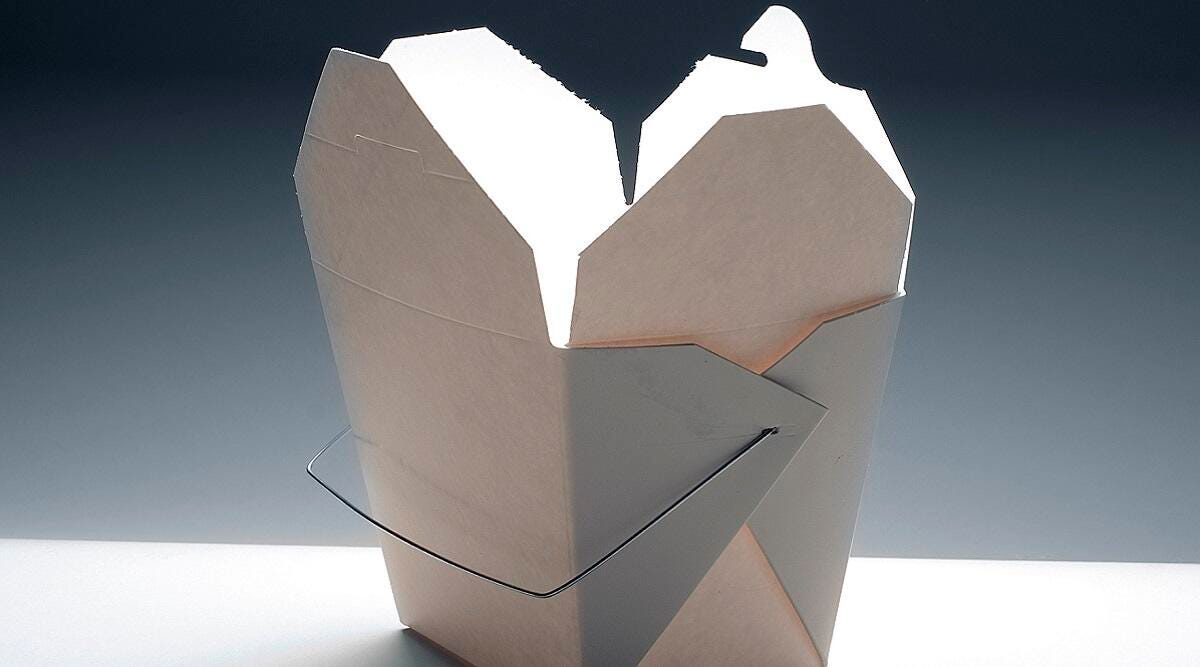Tossing takeout containers into the recycling bin feels like the right move, but looks can be deceiving. A lot of food packaging is designed to be disposable, not recyclable, and some of the most common containers are actually doing more harm than good once they hit the bin.
It’s not just about the material. It’s about the mess. That greasy pad thai box or half-empty soup container might seem harmless, but food residue can ruin entire batches of recyclables. Even something as basic as a pizza box can be problematic if it’s soaked with oil.
Recycling isn’t just about doing something. You want to make sure you’re doing it right. And that means knowing which takeout items to keep out of the blue bin altogether. Here’s what to skip if you want your recycling routine to actually make an impact.
To get the hard truth on takeout container recycling rules and limitations, I spoke with Jeremy Walters. A passionate environmentalist, Walters is the sustainability ambassador for the second-largest recycling collector in the US, Republic Services. He shared some important tips to remember and common mistakes to avoid when recycling takeout boxes and containers at home.

Styrofoam containers are a scorch on the environment. If you feel comfortable asking your local takeout spot to stop using them, you probably should. Image: Internet.
1. Do some recycling research: The most important thing you can do to streamline the process is to find out which containers can and can’t be recycled in your specific area. This will likely vary depending on where you live, so you’ll need to check with your local sanitation department.
2. Don’t assume it can be recycled: Just because a takeout container has a recycling symbol on it doesn’t mean it can be recycled where you live. Some cheaper producers of takeout containers will label something recyclable even if it’s not.
3. Give them a good rinse: When recycling any takeout containers, make sure they’re as clean as possible. Residual food waste, especially grease, can cause a material to become unrecyclable.
What follows are general rules and guidelines on which takeout containers can and can’t be recycled and how best to recycle them.

These black containers are a common choice for take-away restaurants. But they cannot be recycled. Image: Internet.

Chinese takeout containers mostly can’t be recycled. Image: Getty Images
Aluminum containers: You know the ones you can never close as tightly as the restaurant did the first time no matter how much you pinch? Yeah, those are recyclable as long as they’re clean.
 Aluminum containers are recyclable and easy to get clean. Image: Getty Images
Aluminum containers are recyclable and easy to get clean. Image: Getty Images
Paper or cardboard containers: These are often made from recycled materials and can be recycled themselves. Some are even biodegradable and compostable as long as they are thoroughly cleaned and haven’t soaked up much grease. Even ones that aren’t recyclable are far less toxic than plastic or Styrofoam when being processed, burned or buried.
Paper bags: Many restaurants send their orders in large paper bags and those absolutely can and should be recycled or reused. Plastic bags, on the other hand, can’t be.
Clean paper products: Any paper plates, napkins or cardboard pizza boxes that are not heavily soiled with grease can generally be recycled.
 Your favorite local food joint may not even know about some of the more eco-friendly container options. Image:
Your favorite local food joint may not even know about some of the more eco-friendly container options. Image:
If you feel comfortable gently letting your local restaurant know you’d appreciate them using one of the many environmentally friendly alternatives to plastic and polystyrene, you should. You could also send a polite, anonymous email saying how much you love the food and service, but that you have one small request on behalf of the Earth.
Source: CNET.